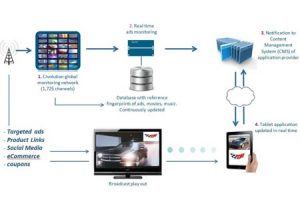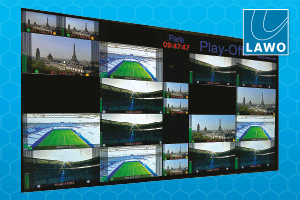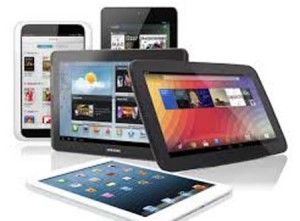Owing to the proliferation of second screen and social media, the traditional living room TV model is changing. What does this phenomenon have in store for the broadcasters? The continued proliferation of mobile enabled devices has amplified the social chatter around TV programmes. Social media such as Facebook and Twitter have become influential in media […]
 Owing to the proliferation of second screen and social media, the traditional living room TV model is changing. What does this phenomenon have in store for the broadcasters?
Owing to the proliferation of second screen and social media, the traditional living room TV model is changing. What does this phenomenon have in store for the broadcasters?
The continued proliferation of mobile enabled devices has amplified the social chatter around TV programmes. Social media such as Facebook and Twitter have become influential in media consumption as audiences turn to their second screen, with more than half of the Millenials owning tablets and using their device in conjunction with the TV, according to research from NPD Group.
This marriage between the second screen and social media enables broadcasters and advertisers to go beyond the traditional living room TV model. Synchronising content airing on TV with an app on a companion screen enables broadcasters to leverage the second screen to complement programming and help reduce churn, as well as hook viewers to the programme as it plays.
Automatic content recognition (ACR), a technology solution enabling broadcasters and advertisers to synchronise content between both screens, allows the mobile device to listen to the activity on the TV and become content-aware. Upon identification, the app can trigger complementary content or ads in real time. Broadcasters can retain their audiences attention and create new business models leveraging the multiscreen phenomenon. This innovative technology also enables advertisers to create cross-screen campaigns that blend the scale of television with the consumers desire to make their entertainment experience more interactive.
The BBC has utilised Civolutions SyncNow technology for live TV recently in order to power its play-along quiz app for CBBCs (the BBCs dedicated children channel) Gory Games, the second screen app developed by SyncScreen for the broadcasting company to complement the third series of Horrible Histories.
Frances My Warner second screen app that syncs the app with Warner content, including DVDs, VoDs and TV programming. Examples of broadcasters utilising the second screen to develop new interactive programmes have multiplied since 2013, demonstrating a strong demand and adoption of interactive experiences both live and time-shifted.
Second screen advertising is also seeing rapid growth since the beginning of the year. Recent pilot campaigns in Europe and North America of TV-synchronised content between TV and Facebook or Twitter have proved hugely successful, delivering between 60% and 250% in consumer click-through rates.
Social Media Transforming TV in the Middle East
Facebook and Twitter, although more popular in the Western world, are showing significant reach in the Arab World as well. According to data provided in the 5th annual Arab Social media report, Facebook has registered over 55m users across the Arab region while Twitter reached 3.7m users. Research from IPSOS also shows that users of Facebook in MENA are more active than in any other part of the world with 42m active on mobile devices. The research also found that people in the region upload 1.2 times more photos and message and comment 1.5 times more than the global average.
According to ABI Research, only the Middle East, Africa and Latin America will see a growth in mobile internet service revenue double digit CAGR between 2013 and 2018.
Social media in the Middle East & Africa is showing a huge uptake with a 191% growth, according to WeAreSquared, even surpassing the growth in economies such as India and China.
While social media is growing at an incredible rate, e-commerce is also gaining significant traction. For example, The Online Shopping Behaviour 2013 study has found that 5 in every 10 people in the UAE trust the internet for shopping, yet another example of how technologically savvy and digitally aware people in the region are becoming.
The increased affordability of smart devices in these regions has led to data traffic consistently doubling every two years on average, and the market is still catching up. We are already seeing signs of commitment from the broadcasters in the region to deploy second screen services, particularly as the population owning connected devices keeps rising.
This idea that the mobile will become integral to the future of advertising in MENA is corroborated by independent research, demonstrating how pivotal the region will soon become for advertisers looking to increase their revenue through synchronised advertising. A report from PWC found that the combination of social media and cheaper smart devices will act as the catalyst to spending on advertising in the regions tripling in the next five years. Spending on internet advertising in the Arab world is expected to grow from $707m in 2013 to $2.46bn in 2018 and television will be one of the biggest beneficiaries of this higher digital spending. Pan-Arab TV is the biggest media sector in the Arab world and the TV market is due to grow in the region to $6.4bn in 2018 from $3.3bn last year.
Regional second screen initiatives include the recent launch of the first Turkish cross-TV-channel, cross-screen app for mobile devices for “Kara Para Ask”, one of the countrys most popular TV series. Developed by Tagvance, in partnership with Samsung Electronics Turkey, the app allows viewers to interact with the TV series in real-time as episodes air on TV. By enabling them to engage with the programme through synchronised quizzes, polls and original videos that can be unlocked via the Samsung Galaxy S5, the broadcaster has launched a brand new content strategy, taking product placement a step further.
The ability to synchronise content between the TV and mobile devices means that broadcasters can retain and regain consumers interest through exciting experiences.
These new TV experiences are rapidly spreading across the globe and opening the door for new cross-platform broadcasting and advertising opportunities utilising social media to enhance the experiences for the end users as well as open up new and improved monetisation opportunities for advertisers.
Andy Nobbs is CMO at Civolution.













































































